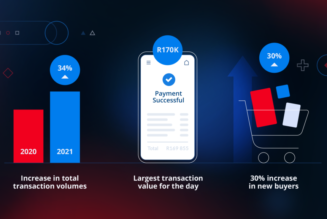With Industry 4.0, the manufacturing and logistics industries are in the midst of digital transformations to increase automation and efficiency. There is a lot to be gained with Industry 4.0, but it all begins with having the connectivity to support it.
As manufacturers address modernization, automation and digitalization, dedicated networks offer a way to support multiple use cases, retain control of network resource allocation and ensure that critical data remains on-site.
The process of integrating the networks of one or more manufacturing site can be triggered by a need to replace legacy networks or the increasing mobility requirements of their operations. A unified platform is required which integrates voice, data, video and IoT.
Digitalization Driving Demand
Industries are now taking steps to incorporate connectivity and cellular into their standards, as many industrial enterprises are defining 5G as their primary connectivity platform for both information technology (IT) and operational technology (OT) systems to reach new levels of productivity, security and safety.
At the same time, connected products are redefining offerings, and what a manufacturer is; everything from a ballpoint pen to heavy machinery can be enhanced “as a service”. When manufacturers can co-create offerings based on direct user feedback, the customer’s bond with a product and brand grows stronger.
Cellular networks are not only relevant to optimizing industrial production processes, but connected products on the consumer and enterprise markets also rely on it, too. As networks evolve from LTE to 5G, cellular becomes even more powerful, as does the value cellular enables.
Manufacturers that see 5G as a new platform for their operational technology (OT) often state that they need dedicated resources to ensure critical manufacturing processes are guaranteed the connectivity resources they require. There are various ways to implement this, but the early adopters have concluded that they require dedicated networks.
Service providers will want to ensure they have the ability to deliver superior, easy-to-use connectivity to industrial customers. By addressing digitalization in industrial markets and providing a clear path to 5G, they can achieve significant new revenue with this enhancement to their current offerings.
The Role of Service Providers
Making the jump from analogue to digital was manageable for many industries; however, through successive digital technologies, it has become increasingly challenging. With the advent of LTE, and now 5G, for many industries it no longer makes sense to build, own and operate infrastructure that is not a core business.
That said, a service provider that is willing and able to release sufficient spectrum and deliver the service required by an industrial enterprise is not always available, so enterprises have requested regulators give them an option of acquiring spectrum directly for their purposes and potentially building networks themselves.
Industrial enterprises are experienced in running their own connectivity networks for OT in-house, but a dedicated LTE or 5G network needs to be designed, integrated, optimized and managed. Service providers are skilled in this area and comfortable managing frequent 3GPP new releases of functionality. A service provider can bring value by offering a service that combines locally licensed and public spectrum.
Digitalization projects depend upon securing wider access to data, shared within sites, between sites and between parties. In the case of critical national infrastructure, public safety workers may need on-site roaming access for emergencies.
These factors drive a need for a capable connectivity platform rather than the legacy of incompatible networks. The use of multi-operator core networks (MOCN) and radio resource partitioning (RRP) is one way for public and private networks to efficiently coexist, splitting the traffic generated from the same radio units on-site. This can be an effective model, provided it fulfils the enterprise’s requirements.
While it is evident for many industries that data is a highly prized competitive asset, it is an exception rather than a rule that an industrial site requires to work in complete isolation from other sites or indeed from upstream/downstream supply chain partners and customers.
Secure mobility for both local and wide-area communications is a growing requirement of many industries. Service providers are able to offer advanced mobility solutions that combine local spectrum with their own national spectrum assets. This data-driven environment is what drives industrial enterprises to evolve their operations with an embedded connectivity platform for the future.
The transition to Industry 4.0 is a must for the industrial sector. Digitalization supports the competitiveness of these businesses, which in turn secures jobs, and also supports a strong and attractive manufacturing sector.
By Zoran Lazarevic, CTO of Ericsson MEA
Edited by Jenna Cook
Follow Jenna Cook on Twitter
Follow IT News Africa on Twitter










